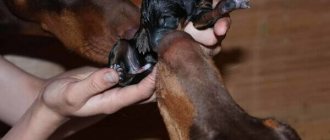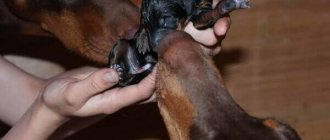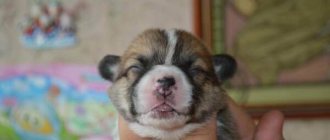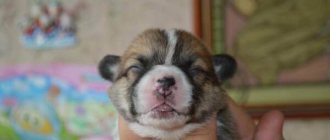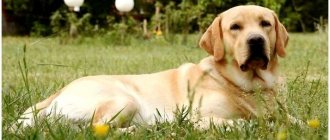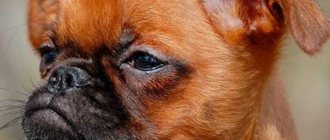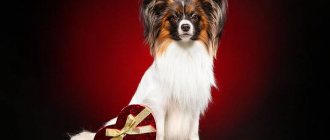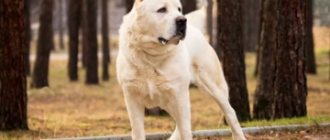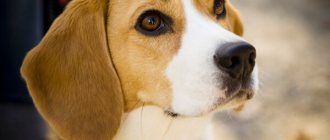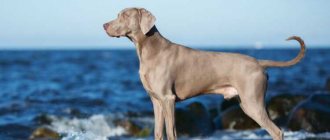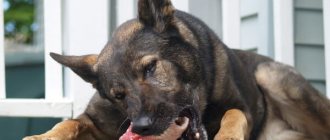The Dachshund is one of the most famous dog breeds. Small stature and an elongated back, prominent muscles and strong teeth, a constant desire for dominance and a bold character - this characterizes cute and attractive dachshunds who really need human care.
Before buying a dog, you need to master the important principles of caring for a dachshund, precise physiological stress, state of health, and in addition, organize housing, remove things that are unsafe for the dog’s existence.
Puppy care
In the first days after birth, the puppies are looked after by a bitch. Newborn babies have no vision or hearing; they open their eyes and begin to hear only after about 2 weeks.
At first, puppies cannot control their body temperature on their own, so a warm heating pad should be placed in the “nest.”.
Complementary foods should be introduced gradually and in small portions, carefully observing the dog’s reaction to new foods. When changing teeth, your pet should be allowed to gnaw on cartilage and soft bones.
The puppy is not allowed:
- jump from a height;
- stand on your hind legs;
- go outside until vaccination and the end of quarantine.
You can feed your puppy natural products or dry food appropriate for the pet’s age.
The number of feedings depends on age:
- up to 3 months – up to 6 times a day;
- 4-6 months – 3-4 times;
- 7-8 months and older – 2 times.
Also, caring for a puppy involves timely treatment for fleas and ticks, deworming and vaccination.
An adult dog
Basic care for your dachshund involves:
- regular washing;
- combing out the coat and grooming;
- cleaning teeth and ears;
- proper, balanced nutrition;
- treatment for internal and external parasites;
- nail trimming.
We must not forget about daily long walks, which dogs need not only for proper development and physical health, but also for socialization and the formation of a stable psyche.
Expert opinion
Kozhevin Semyon Kirillovich
Expert dog handler.
Representatives of this breed do not require complex and time-consuming care for their coat, eyes and ears. For proper growth and development, they first of all require balanced nutrition in a properly calculated amount, since dachshunds are prone to obesity. You cannot skimp on food - it should only be high-quality feed or natural products. We also must not forget about timely regular vaccination, deworming and treatment for external parasites.
Appearance
The Mini Dachshund is a small, stocky dog with a strong build. The dog's behavior shows confidence and slight wariness, indicating readiness for action. Low stature should not create problems when moving, following commands, or taking a stance. Compared to its small size, the Dachshund is strong, resilient, flexible and very agile.
The size of an adult dog is calculated according to three parameters:
- Height: 30–35 cm at the withers.
- Weight: 3–4 kg.
- Chest circumference: 30–35 cm.
What is the fundamental difference between the types of Dachshunds? So, let's dot the i's:
- The dwarf dachshund differs from the usual one only in its reduced dimensions; otherwise, the dogs fully comply with the breed standard.
- The differences between the dwarf dachshund and the rabbit dachshund are also in size, but contrary to popular belief, the first is larger than the second!
What you need to prepare
By the time the puppy is in its new home, you must purchase all the necessary accessories.:
- a bedding or house (kennel) where the dog will sleep and rest, especially since dachshunds periodically need to be alone;
- bowls for water and food, preferably enamel or clay;
- toys - they will help distract the puppy from longing for its mother and interest in furniture and the owner’s shoes;
- absorbent diapers for puppies and a tray for older dogs - the physiological characteristics of these dogs do not allow them to wait for a walk, so they should be immediately trained to use the toilet in the house;
- collar – not metal, preferably with a thickening in the center;
- leash – optimal length 3-5 m.
You should also buy nail clippers, combs and special shampoos to care for your pet in advance.
First days at home
At first, the puppy will get to know his surroundings as actively as possible, so it is important to create a safe and comfortable environment for him:
- hide all household chemicals;
- remove poisonous plants, as well as small objects that a pet can swallow, and electrical wiring;
- keep the house clean and clean regularly - the puppy has a weak immune system and objects on a dirty floor can cause infection and illness;
- You should not leave the dog alone at least in the first few days, this will become additional stress for the animal;
- if a puppy whines, yearning for its mother, it should not be scolded or punished;
- if you have a cat, you should immediately try to make friends with the animals;
- If there are children in the family, they need to explain the rules of behavior with a dog.
From the first days a puppy appears in the house, he should begin to be accustomed to hygiene procedures and rules of behavior.
Origin story
The first mentions of short dogs with a long body and short legs are found in Ancient Egypt. They became widely known and named in Germany, where specific traits were bred for the main purpose of persecuting small animals that live in burrows, such as foxes and badgers.
At the beginning of the 20th century, F. Engelman and a group of dachshund lovers set out to create a small dog that would replace the ferret in rabbit hunting. For this purpose, miniature pinschers were bred with ordinary dachshunds, but the offspring lost all hunting skills and were useless in this craft. A different tactic was chosen - crossing small adult purebred dachshunds and strict selection. The process was long and difficult, as small animals produced small litters. But the goal was achieved, and soon a variety appeared that retained the character of a hunter and the qualities of a successful catcher of rabbits and hares.
Personal place
A suitable place for your dog to sleep and rest is one of the main points in caring for your dachshund.
It is important that your pet feels comfortable and cozy, so you must follow several rules when choosing and arranging it:
- to equip the place, you should choose a quiet corner where there are no drafts and no heating devices located near them;
- a mattress, rug, blanket or other soft, uniform bedding must match the size of the pet;
- On top of the selected bedding you need to lay a cloth that can be easily washed or replaced if dirty.
You should also remember that dachshunds need attention and communication, so their place should be where there are always people.
Feeding and diet
Dachshunds do not eat a lot - based on the calculation of 40 g of food per 1 kg of dog weight , the serving size should be on average 120-315 g .
Natural products and ready-made industrial feeds are suitable for feeding, but both types of food should not be mixed.
With a natural diet, the dog’s menu should include:
- lean meat;
- fish, but maximum 2 times a week;
- rice, buckwheat, rolled oats and wheat cereals;
- pasta, but infrequently and only from durum wheat;
- dairy products;
- boiled eggs, preferably only the yolk;
- vegetables and fruits, except grapes;
- biscuits, unleavened crackers.
Food should be warm, cooked without adding salt or spices. In addition, the natural diet must be supplemented with vitamin and mineral complexes.
Dachshunds are not allowed to give:
- pork;
- sweets and confectionery;
- bones;
- sausages and smoked meats;
- pickles, marinades;
- fatty dairy products;
- semolina and pearl barley.
When feeding with industrial feeds, preference should be given to premium and super-premium products or holistic feeds. The best dry food for this breed: Royal Canin, Brit Care, Acana, Almo Nature, Arden Grange.
How often should you go for walks? Can it be kept outside in winter?
Representatives of this breed have a higher than average need for active pastime, so they need regular walks, during which the pet gets the opportunity to play, get acquainted with something new, and get rid of pent-up energy.
You need to walk your dachshund 2-3 times a day for 1.5-2 hours.
Often a morning walk lasts only 20-30 minutes due to the owner’s rush to work; it’s not a big deal if a short morning walk is compensated by a long and intense evening walk.
The size and body structure of dachshunds do not allow them to live on the street - they react negatively to both heat and cold.
IMPORTANT!
These dogs have a developed and mobile muscular system and a lack of activity is detrimental for them, so walks are necessary even in the cold season, but only in warm clothes.
However, for a dachshund to be healthy, it must live only in a house.
Description of the breed
The first mention of dachshunds is their depiction on ancient Egyptian frescoes. Modern dogs of this breed are the result of selective breeding. Three categories of dachshund breeds have been developed, which have common features: an elongated body, short legs, long ears that hang down.
Dachshund
Table 1. Anthropological data of dachshunds depending on category.
| Name | Height, cm | Weight, kg |
| Standard | 20 — 27 | 6 — 9 |
| Dwarf | 15 — 20 | 3,5 — 4 |
| Rabbit | 11 — 14 | until 3 |
INTERESTING! Dogs from foreign breeders have longer legs, so their height is higher than average.
The lifespan of a dog is 15 years.
Dachshunds can be long-haired or short-haired, with soft or hard coats. Color ranges from light yellow to dark shades with contrasting tan.
Dachshund color
The animal is agile, with well-developed muscles of the body and limbs. The dog's jaws are also very strong.
What clothes do you need? Harness or collar?
Clothes for a dachshund must meet several criteria:
- be comfortable and durable;
- consist of natural materials;
- do not hinder activity and do not interfere with relieving yourself;
- protect the chest.
For cool, but dry and windless weather, knitted clothes are suitable, for walks in wet weather you will need a raincoat, and for the winter season you need warm overalls and a fur coat.
There is no need for shoes, the exception is walking in places where salts and reagents are scattered.
When choosing between a leash and a harness, preference should be given to the leash.
A harness is contraindicated for dachshunds, since it promotes the appearance of outward (loose) elbows, provokes the pet to stretch its neck, and also when walking on a harness, the load is distributed incorrectly.
Possible deviations
- Irregular chest – sunken or normal shape;
- Lack of teeth;
- Tail defects - crease, bend, tail ring;
- Fear, aggression, lethargy, apathy;
- The puppy may not gain weight or, on the contrary, be too well-fed;
- Stiffness of movement, lameness;
- Sagging back;
- Narrow or too wide lower back;
- Distorted jaw, malocclusion;
- Crooked paws;
- Not standard color;
- Cryptorchid – non-descent of the testicles into the scrotum;
How to toilet train?
The accelerated metabolism of dachshunds does not allow them to wait until the next walk, so it is necessary to accustom the dog to the toilet in the house.
To do this, you need to carry your pet to the toilet every morning, after eating and active games, and not allow him to leave until he has done his business. After recovery, it is important to praise the dog and treat it with a treat, reinforcing positive associations with it.
If your dog poops outside the litter box or diaper, you need to limit his space to a separate room, while continuing to show him the correct place to relieve himself..
Historical reference
Let us immediately note that the dwarf Dachshund breed is not the smallest , but it originated from standard or “normal” representatives of the breed. Dogs that looked specific were in fact shaped by hunting and the needs of this process . Short legs and an elongated body are a distinctive feature, which, by the way, for any other breed (except Basset Hounds and other dachshund dogs) would be considered a pathology.
The remains of early dachshunds have been found in many countries, but most of them were found in Germany. It is no secret that for the Germans, hunting has always had a special place. At the dawn of the country's development, survival depended on the success of the hunter, after which this turned into the mainstream of business and traditions.
The Miniature Dachshund was bred “to suit needs.” The structure and strength of the hole directly depends on the soil in which it is dug. The usual wooded area is cut by fairly wide limits in which a standard Dachshund can work. Closer to bodies of water and at the foot of the mountains, the burrows are narrower and more dangerous.
Note! The smaller the Dachshund, the less risk it has of getting stuck in a narrow passage and becoming a victim of an angry beast.
It is worth noting that dachshund dogs have always been universal, they worked both on and under the ground. Dachshunds Basset Hounds and Brackies are highly specialized hound breeds that are descended from common ancestors with the Dachshund. The breed lines probably split in the 17th century, at least at this time dogs with crooked paws for working underground and larger dogs for long-term hunting on foot were described.
By the 18th century, the existence of a huge breed group of Dachshunds was described as a common occurrence. It is interesting that Germany was overpopulated with short-legged dogs, which was one of the reasons for their active export. Crossbreeds of “couch” and working dogs, as well as interbreed matings, have led to a noticeable deterioration of the breed.
Already in the 60s, Dachshunds were divided not only by size, but also by their ability to work . Since Germany was interested in preserving the working appearance of the dogs, there was a need for an official description of the breed. The first standard was published in 1880, but it has been supplemented and adjusted more than once. Only one thing remained unchanged - the Dachshund was considered as a hunting dog.
This is interesting! Since 1988, the standard has included performance tests in artificial burrows.
The breed survived two wars, naturally, not without losses. In the post-war years, dogs brought to the CIS countries were considered as decorative or apartment dogs. In the middle of the 20th century, the popularity of the breed confidently “crept” up. Hunters from many countries suddenly remembered their excellent working qualities. Working tests resumed and began to be carried out quite actively. In addition, Dachshunds have not lost their rankings on the list of apartment pets.
This is interesting! One thing can be said with certainty, if you do not take into account a small emotional outburst among the intelligentsia, Dachshunds earned their popularity in spite of fashion, and not because of it.
Nail trimming
Due to too long nails, the dog cannot fully step on its paws, which leads to improper distribution of the load on the ligaments and joints, causing lameness.
In adults leading an active lifestyle, the claws wear down on their own during long walks..
If this does not happen, the nails should be trimmed using a guillotine nail clipper at least once a month, carefully shortening the nail plate so as not to touch the blood vessels.
Features of training
Dog breeders are often interested in how to train a dachshund, how difficult is it to cope with the independent nature of such a dog? Indeed, representatives of this breed are quite difficult to train. Nevertheless, it is quite possible to achieve obedience from an animal and fulfill a certain list of commands.
It is necessary to begin raising a dachshund from a very young age, showing patience, tact, and perseverance. The owner who has chosen a name for the dachshund needs to try so that the puppy quickly learns to respond to it. An animal that understands its owner and fulfills his request needs praise and a reward in the form of a piece of treat.
Dachshunds react negatively to harsh language and physical influence, which is why they are capable of refusing to follow commands and doing everything in defiance. By showing respect to your four-legged friend, the owner will certainly achieve good results.
A beautiful, smart, cheerful dachshund will definitely become a full member of a large family or an excellent companion for a lonely person. Communication with this four-legged pet is guaranteed to bring pleasure and joy to all household members.
How to properly clean your ears
Dachshunds need regular ear wax and dirt cleaning. This must be done carefully, as deep cleaning can damage the membranes.
You need to slightly bend your ear, opening the ear canal, and gently wipe it with a cotton swab dipped in warm water, hydrogen peroxide or a special lotion.
Cleaning your ears too often can cause increased wax production and lead to inflammation.
Hunting
Contrary to popular belief, dwarf Dachshunds are quite efficient, moreover, they are more playful than their standard counterparts. In defense of large Dachshunds, we note that they work successfully as hounds. Small dogs are used for burrow hunting in difficult terrain where there is a risk of the dog getting stuck in a passage . The dachshund does not kill the animal when a threat arises, but drives it to the surface, to the hunter.
The humanistic mood of society has led to the condemnation of hunting for fun and more and more Dachshunds are becoming sofa favorites. By the way, in addition to working skills, four-legged animals can boast of a sharp mind and the ability to adapt to the owner’s lifestyle.
Grooming
Smooth-haired representatives of the breed do not require special care for their coat: it is enough to wipe them with a terry towel, and during shedding - with a damp mitten once a day to get rid of falling hairs. Long-haired dachshunds need to be brushed every 2-3 days and always after each walk with a brush, first with sparse and then with frequent teeth, to get rid of grass and debris tangled in the fur .
Basic hygiene procedures
The dachshund is a dog that knows how and loves to get dirty, if it is not digging the ground, you can watch it looking for something interesting and testing its teeth. And she will happily roll around in the mud and happily move on. Not at all upset that she was such a mess. You should be calm about pranks, because a puppy is exploring the world, and add to this the natural curiosity of an adult hunting dog and you get an explosive mixture.
To wash your dachshund, you need plain water, without soap or shampoo!
If you wash her with shampoo every day, you risk developing skin diseases and depleting her coat. Sometimes it is enough to wipe your dachshund with a wet towel and wash your paws after a walk. Bathing should be done once every 2-3 months with a mild shampoo. You need to brush your dog daily with special brushes; each type of dachshund has its own brush.
As for the ears, they need to be cleaned as they become dirty, wiping them well not only with a cotton swab with lotion, but also the shells themselves with a cotton pad. It should be taken into account that the ears have a special structure; they should not be too droopy, but stand up a little. Therefore, do not smooth your ears during the procedures, so as not to spoil them, and also when stroking your head - watch this, otherwise your ears will fall off.
Wipe your eyes with infusions of chamomile or tea, not naturally sweet. And cut off the claws with a nail clipper as they grow back. If your dachshund likes to walk along the avenue with you, perhaps they will wear them down on their own, but during outings in nature, their nails grow and cannot be worn down on their own; they need to be trimmed. If you don’t know how, entrust this procedure to a salon groomer or a knowledgeable person.
The dog’s teeth also need to be brushed; it, of course, can chew on various objects, bones, and toys that you purchase. But they still cannot replace a toothbrush; they need to monitor plaque and remove it at least once every two days using a special paste for dogs.
Do I need to bathe?
Until the dog is 5 months old, it cannot be bathed - at this time it is still undergoing the necessary vaccinations. In case of emergency, you can rinse your pet under warm running water; this should be done after every walk.
In the future, you need to bathe the dog in the bathtub, placing a rubber mat on the bottom so that the paws do not slip..
For washing, you need to use special shampoos that match the type of dachshund’s coat.
CAREFULLY!
Washing too frequently dries out your pet's skin and deteriorates the quality of the coat, so you should bathe your dachshund no more than once a quarter.
Photo gallery
Photo 1. Marbled puppies
Photo 2. White-spotted dachshund
Photo 3. Boar color
Photo 4. Brindle dachshunds
Photo 5. Brown and tan coat
Photo 6. Red dwarf dachshund puppy
Teeth cleaning
Dachshunds are prone to the formation of tartar, which destroys enamel and causes an unpleasant odor from the mouth.
You need to regularly brush your pet's teeth using a toothbrush or a hard cloth and a special paste or 3% table salt solution.
Brushing your teeth is an unpleasant process for your dog, so you should give him a treat after the procedure..
Dachshund house
The dog should have its own place in the house or apartment, where it can relax, sleep and just be alone, away from noise and prying eyes. Of course, you can simply give your pet a corner with a mattress or other bedding, but having a house will improve living conditions.
Criterias of choice:
- design with removable covers made of natural fabrics;
- it should be installed at a short distance from the floor;
- if the conventional concept of “house” simply means a bed, it is important that it has high sides that protect from drafts;
- bedding - a special mattress, also in a removable cover.
The mattress can be filled with foam rubber, but the option with buckwheat husks is more practical, since fleas cannot live in it.
Pet sterilization
Main medical indications for which sterilization is recommended:
- frequent estrus;
- false pregnancy;
- difficult labor caused by physiological conditions or infection;
- alarming behavior in male dogs.
It is also believed that surgery performed before 2.5 years of age minimizes the risk of mammary cancer in female dogs.
Sterilization of dogs can be carried out at any age, but it is better if it is done before 1 year in males, and before the first heat in females - this reduces the likelihood of developing gynecological pathologies in females, and males do not have time to develop and take hold of unwanted habits.
The decision to carry out sterilization should be based primarily on medical indicators, and not on the wishes of the owners.
